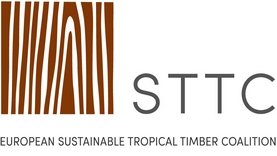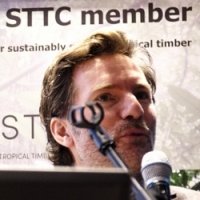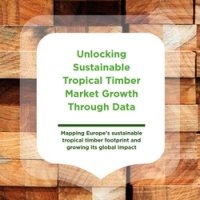Blueprint for a promotional highway

Photo Mariska Massop
Netherlands industry action to encourage use of verified sustainable tropical timber, now looks set to inform similar moves elsewhere in Europe.
The various initiatives were described at the STTC Conference by Eric de Munck of the timber market development body Centrum Hout. Among them was its work with a group of companies to promote the advantages of verified sustainable tropical wood in marine civil engineering applications.
The ‘Hout in de GWW’ initiative brings together 12 tropical timber providers. With Centrum Hout they formulated a joint strategy for taking key industry messaging to the civil engineering sector, targeting the most influential decision makers within the profession.
Supported by the STTC, Centrum Hout fed results from its life cycle analysis into the project, comparing the environmental performance of tropical timber species in sheet piling, bridges and other applications, versus steel, plastics and concrete. The outcomes – which were strongly favourable to timber – were widely disseminated through publications, online and at special meetings for engineers. An online CO2 calculator was also developed to reinforce the messaging and guidance issued on use of tropical species, including lesser known varieties. The calculator is in English, French, Dutch and German and included in the list of tropical timber promotional tools on the STTC website.
In its second phase, Hout in de GWW is also focused on raising currently low levels of local government awareness of the benefits of using verified sustainable tropical timber.
“The goal is to get as many authorities as possible committed to verified sustainable wood and wood products in civil works and refrain from using products with less positive climate and environmental footprints,” said Mr de Munck.
The Dutch Ministry of Transport and Waterways is also evaluating use of timber more widely and has commissioned more LCA research. One result is the ‘Biobased highway’ concept, developed by the Ministry as a model for using timber and other biobased materials for roadway fixtures and fittings, from safety and noise barriers, to lampposts and roadside wind turbines. The goal, said Mr de Munck, is to shrink the carbon footprint, as part of the overall environmental impact, of infrastructure development.
Centrum Hout is now sharing its LCA work and know-how, with, among others, the International Tropical Timber Technical Association (ATIBT). The aim is to develop a similar tropical timber database for France, where government is demanding LCA for building products by 2021.
Additionally Centrum Hout, together with the Working Group Sustainability of the European Woodworking Industries Confederation, CEI-Bois, is evaluating possibilities for establishing a common European database for wood LCA information as a basis for country-specific analysis.
“The Danish government is also looking into a way to define the environmental impact of buildings and building materials as a whole and is interested in learning from the Netherlands, where we already have a method, database and regulations for this in our building code. We also have a specific adaption of this system for civil works, called DuboCalc,” said Mr de Munck. “Perhaps as a spin-off from the STTC Conference, there will be an exchange of views on the topic in the new year.”
The overall pan-industry Dutch strategy for timber promotion, presented by Mr de Munck at the Conference, with the whole sector, tropical and temperate, working together, is also seen as providing a model for a wider marketing programme.
“It was positively received at the Conference and it would be good, if, perhaps under the flag of STTC, there could be consultation among parties willing to develop a similar blueprint for use all over Europe,” said Mr de Munck.
The STTC responded that it would be interested in supporting spin-offs from the Dutch initiatives.
Mr de Munck’s presentation can be found here.



